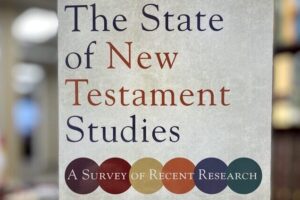Systems are great. You should use them for, like, everything. I just realized this summer that there’s a pretty straightforward system for writing a research paper over five days.
- Identify a category. I like Athanasius’ On the Incarnation, but I had no idea what to write about it. So I picked it up and read the first twenty or so pages closely. Then I checked out Peter Leithart’s book, Athanasius, which breaks down his theology in three chapters. After skimming the first two chapters, I realized that the category of Athanasius’ thought that interested me most was his view of creation. I wrote down some quotes and followed Dr. Leithart’s footnotes to some of Athanasius’ ideas about creation in other sources (Contra Gentes, Discourses Against the Arians, and Letter to Amun). That was enough for day one.
- Identify a topic. After an EBSCO Host search for the two terms, ‘Athanasius of Alexandria’ and ‘Creation,’ I realized there’s a lot of writing in that area. Scholars narrow this area of study down to things like “Revelation in Athanasius’ Doctrine of Creation,” or “Roots of Soteriology in Athanasius’ Doctrine of Creation.” After skimming the first five scholarly articles I found, I decided on my research question: How does Athansius’ polemic in his presentation of the doctrine of creation in On the Incarnation set up his soteriology in the same book? The real question a topic addresses is ‘Why are we reading this?’ Sometimes, I honestly don’t know. Skimming articles tells me a few things:
- Where is she getting her ideas?
- With whom is my author disagreeing?
- Which new terms are they introducing to the conversation?
- What is he trying to say on page 72?
- What have these ideas done?
- Read for real. Then, I could choose which scholarly articles, or which parts of scholarly articles, would be most helpful to read for real. Each of them pointed me back to the original sources, Athanasius’ actual writings. As I read, I took specific notes and quotes under the following categories:
- Polemical context of On the Incarnation
- Hard lines Athanasius draws in his presentation of the doctrine of creation
- Connections between Athanasius’ soteriology and doctrine of creation
- Differences between Athanasius’ connections and other church fathers’ connections between those doctrines
- Implications of Athanasius’ unique presentation of those connections
- Copy and paste. Once I knew everything I needed to know for a 10-page paper — approximately 600 words on each of my five categories — I rearranged all of my notes and quotes into an outline that argued a position. Remember, the point of a research paper at the high school, college, or master’s level isn’t to change the world; it’s just to make some connections for yourself that you didn’t see previously in such a way that helps you move forward as a thoughtful person.
- Write the paper. Because neither your professor / teacher nor your classmates / colleagues have done the research you have, you owe them a summary of the connections you discovered. That’s all a research paper is. So smooth out your organized outline into a paragraphed paper with indents and footnotes, an introduction and some applications.
Research papers aren’t poems; you don’t need a muse. School is work — good work — and there are good ways to do it. So take my advice and follow a system that will help you read and write efficiently. This process, from start to finish, took about 15 hours of focused work. Heck, if school is your full-time job right now, you could be writing three research papers a week!





Leave a Reply
Your email is safe with us.